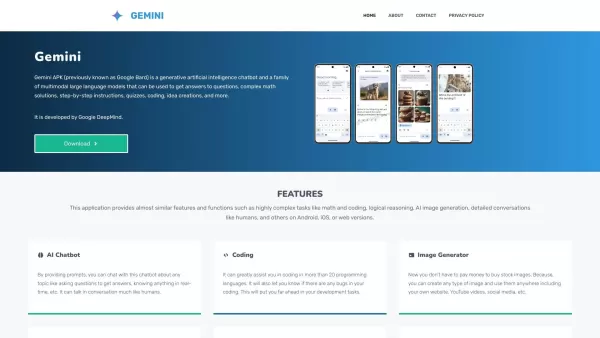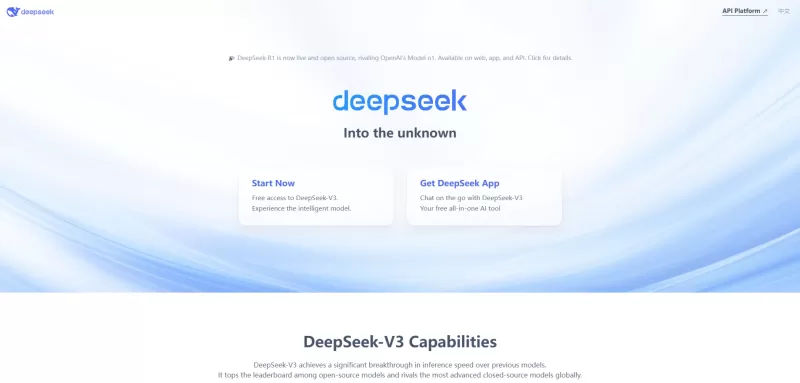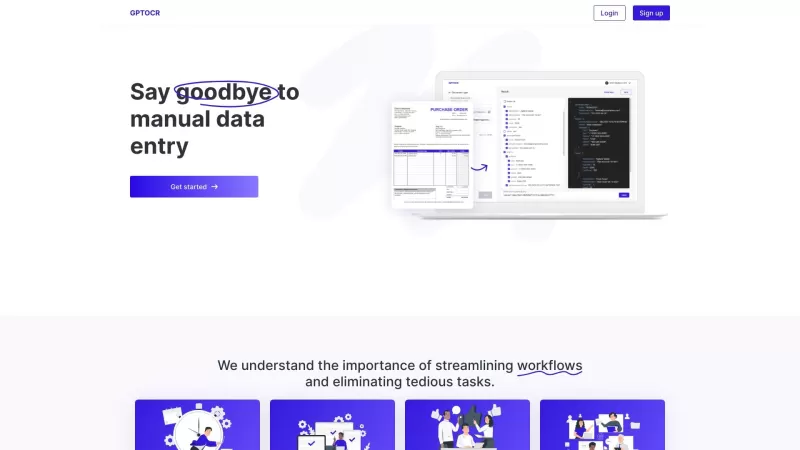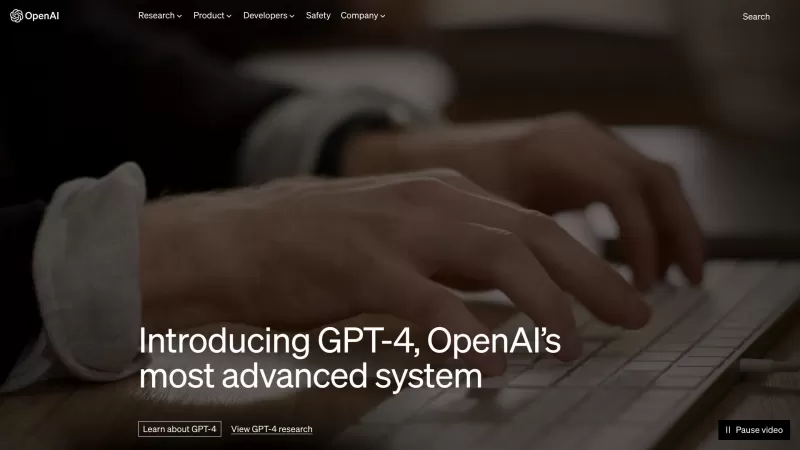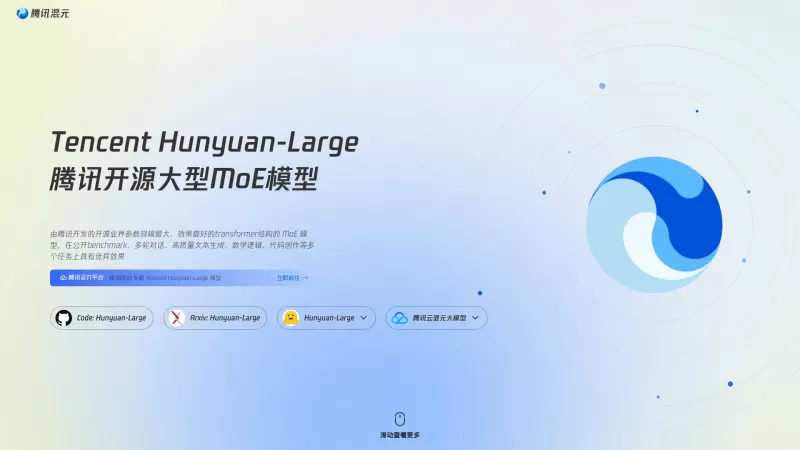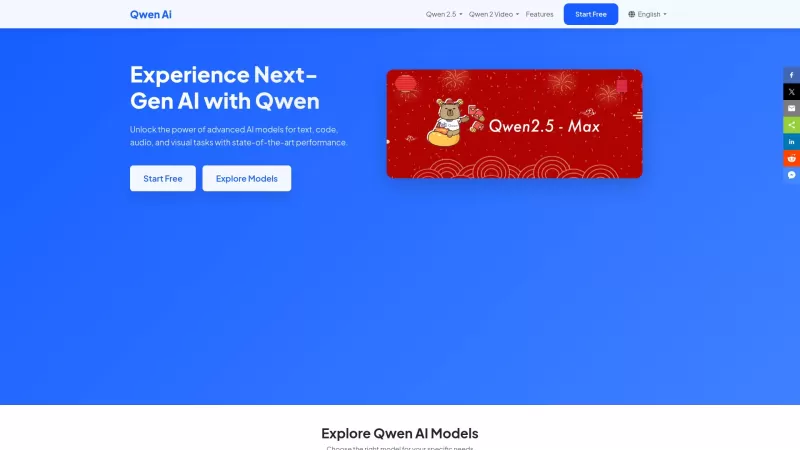How to avoid the AI complexity trap

The Paradox of AI: Simplicity vs. Complexity
Integrating artificial intelligence into an organization is often seen as a way to streamline operations and reduce complexity. However, the journey from development to deployment and ongoing support can feel overwhelming, requiring a diverse set of skills and constantly evolving technologies. So, can AI truly simplify while also demanding so much?
Magical or a Lot of Work?
Chris Howard, Gartner's global chief of research, highlights the misconception that AI is a straightforward solution. "AI seems like this magical, really easy thing, and it can do all kinds of amazing things," he says in a recent video. "But once you start to work with it, you realize that it's actually hard, and there are aspects of it that are really complicated."
The ever-changing landscape of AI technologies, especially in the generative AI space, adds to the confusion. Howard explains, "So they haven't reached a point of stability...where it's really easy to understand how you would fit different pieces together. And so because that's changing, it causes confusion -- it's super complex." Moreover, managing data effectively is crucial yet challenging. "You need to bring it together into a place where you can actually operate on it and get better results. What appeared to be magical actually is a lot of work."
Despite the challenges, AI holds promise in automating and simplifying complex tasks. Smita Hashim, chief product officer at Zoom, believes AI can "help resolve complexity in the workplace and expand productivity and employee and customer happiness."
However, AI isn't a panacea. Richard Demeny, a former software development consultant at Arm, cautions, "AI is not a silver bullet." He points out that AI's capabilities are based on probabilities rather than true understanding. "It's humans who design, build, and implement systems, and while AI may automate some entry-level roles and certainly bring significant productivity gains, it cannot replace the amount of practical experience IT decision-makers need to make the right trade-offs."
Demeny adds that for AI to provide the best answers, "it would need to know every little detail that's in the decision-maker's head. It's simply more practical to come up with the decision oneself, with some AI assistance."
Hashim emphasizes the importance of choosing the right platforms. "Your users work across many different applications," she says. "Choose platform solutions that are open and enable seamless integrations and workflows. This flexibility is crucial for reducing complexity in today's multi-vendor environment."
How AI Can Benefit IT Operations
As IT systems grow increasingly complex, businesses face unprecedented challenges. Bill Lobig, vice president of product management and observability for IBM Automation, notes, "Teams are managing massive amounts of applications, leveraging different clouds and on-premises environments -- and applications need to stay up and running. Right now, over 1,000 applications are used by organizations, and 82% of enterprise leaders say IT complexity impedes success."
This complexity leads to issues like siloed apps, potential outages, resource and energy waste, and performance problems. Lobig sees AI as a solution. "How can IT leaders manage the risk of these potential issues and get ahead of looming situations of downtime? The answer is observability and application resource management -- all made possible through AI-powered automation."
With AI, teams can "proactively optimize the allocation of compute, storage, and network resources at every layer of the stack," Lobig explains. This approach eliminates the need for reactive measures and overprovisioning, saving both time and money.
Staying updated with AI developments is crucial for IT operations. Lobig advises, "Adapt and scale with hybrid architecture, while keeping a holistic view of performance, cost, and value across applications and networks."
AI Deployment Needs to Be Thoughtful
To manage both AI and IT complexity effectively, thoughtful deployment is essential. Hashim suggests focusing on "the simplicity of user experience, quality of AI, and its ability to get things done." She advocates for using AI to "uplevel all your employees...so that your organization as a whole can be more productive and happy."
Howard emphasizes the importance of consistency in managing complexity. "Platforms...make things consistent. So you're able to do things -- sometimes very complicated things -- in consistent ways and standard ways that everybody knows how to use them. Even something as simple as definitions or taxonomy. If everybody is speaking the same language, so a simplified taxonomy, then it's much easier to communicate."
Ultimately, Demeny reminds us that "AI might offer informed suggestions, but it is still humans who make the final decisions and bear the consequences." He stresses that "every product, every AI infrastructure, is different, and the complexities of each require human insight. AI's role should be seen as a tool to assist, not a replacement for the judgment and expertise that comes with experience."
Related article
 EbookFusion AI: Revolutionize eBook Creation with Advanced AI Technology
In our digital-first era, eBooks have emerged as powerful tools for content distribution, lead generation, and thought leadership. While professional eBook production traditionally demands substantial time and expertise, EbookFusion AI transforms thi
EbookFusion AI: Revolutionize eBook Creation with Advanced AI Technology
In our digital-first era, eBooks have emerged as powerful tools for content distribution, lead generation, and thought leadership. While professional eBook production traditionally demands substantial time and expertise, EbookFusion AI transforms thi
 Microsoft's Next-Gen Xbox Features AMD Chip and Open Store Policy
Microsoft has officially unveiled its collaboration with AMD to develop next-generation Xbox hardware, signaling a bold new direction for its gaming ecosystem. Xbox President Sarah Bond revealed the partnership in a YouTube announcement, detailing pl
Microsoft's Next-Gen Xbox Features AMD Chip and Open Store Policy
Microsoft has officially unveiled its collaboration with AMD to develop next-generation Xbox hardware, signaling a bold new direction for its gaming ecosystem. Xbox President Sarah Bond revealed the partnership in a YouTube announcement, detailing pl
 R1: Chinese Tech Giant Unveils Optimus-Rivaling Humanoid Robot
Ant Group Unveils First Humanoid Robot Prototype
The payments giant's robotics division has debuted its R1 humanoid at major tech events, showcasing automated cooking demonstrations and signaling ambitions beyond simple manufacturing applications.
P
Comments (7)
0/200
R1: Chinese Tech Giant Unveils Optimus-Rivaling Humanoid Robot
Ant Group Unveils First Humanoid Robot Prototype
The payments giant's robotics division has debuted its R1 humanoid at major tech events, showcasing automated cooking demonstrations and signaling ambitions beyond simple manufacturing applications.
P
Comments (7)
0/200
![WillPerez]() WillPerez
WillPerez
 August 23, 2025 at 9:01:18 AM EDT
August 23, 2025 at 9:01:18 AM EDT
AI simplifying things? Ha, sounds like a sci-fi dream! This article nails how deployment gets messy fast. Too many skills needed, not enough coffee. 😅 Anyone else struggling with this?


 0
0
![ThomasMiller]() ThomasMiller
ThomasMiller
 July 23, 2025 at 12:59:47 AM EDT
July 23, 2025 at 12:59:47 AM EDT
L'article est super intéressant, mais franchement, intégrer l'IA semble être un casse-tête sans fin ! 😅 Pourquoi tout compliquer alors qu'on veut juste simplifier les choses ?


 0
0
![JustinJackson]() JustinJackson
JustinJackson
 May 12, 2025 at 9:42:08 PM EDT
May 12, 2025 at 9:42:08 PM EDT
Evitar complexidade no AI é essencial! Este guia esclarece muito bem o paradoxo entre simplicidade e complexidade. Foi surpreendente perceber o quanto é difícil tornar as coisas simples. Ótimas dicas para lembrar ao implementar AI. 🔧🌟


 0
0
![WillLopez]() WillLopez
WillLopez
 May 12, 2025 at 5:32:24 PM EDT
May 12, 2025 at 5:32:24 PM EDT
AI 복잡성을 피하는 방법을 알게 되어서 좋았어요! 단순함과 복잡함의 역설이 잘 설명되어 있습니다. 하지만 구체적인 예시가 있으면 더 이해하기 쉬웠을 것 같아요. 여전히 유용한 정보였습니다. 🤔💡


 0
0
![MarkRoberts]() MarkRoberts
MarkRoberts
 May 11, 2025 at 7:11:53 PM EDT
May 11, 2025 at 7:11:53 PM EDT
Evitar la complejidad en IA es fundamental! Esta guía explica muy bien el paralelismo entre simplicidad y complejidad. Es increíble ver cuánto esfuerzo se necesita para hacer las cosas sencillas. Excelentes consejos para tener en cuenta al implementar IA. 📝🧠


 0
0
![EdwardTaylor]() EdwardTaylor
EdwardTaylor
 May 11, 2025 at 3:53:41 PM EDT
May 11, 2025 at 3:53:41 PM EDT
AIの複雑さを避ける方法が学べてよかった!シンプルと複雑さのジレンマがよくわかるガイドです。実装する際のアドバイスはとても参考になりますね。もっと具体的な例があればさらに良くなったかも🤔


 0
0

The Paradox of AI: Simplicity vs. Complexity
Integrating artificial intelligence into an organization is often seen as a way to streamline operations and reduce complexity. However, the journey from development to deployment and ongoing support can feel overwhelming, requiring a diverse set of skills and constantly evolving technologies. So, can AI truly simplify while also demanding so much?
Magical or a Lot of Work?
Chris Howard, Gartner's global chief of research, highlights the misconception that AI is a straightforward solution. "AI seems like this magical, really easy thing, and it can do all kinds of amazing things," he says in a recent video. "But once you start to work with it, you realize that it's actually hard, and there are aspects of it that are really complicated."
The ever-changing landscape of AI technologies, especially in the generative AI space, adds to the confusion. Howard explains, "So they haven't reached a point of stability...where it's really easy to understand how you would fit different pieces together. And so because that's changing, it causes confusion -- it's super complex." Moreover, managing data effectively is crucial yet challenging. "You need to bring it together into a place where you can actually operate on it and get better results. What appeared to be magical actually is a lot of work."
Despite the challenges, AI holds promise in automating and simplifying complex tasks. Smita Hashim, chief product officer at Zoom, believes AI can "help resolve complexity in the workplace and expand productivity and employee and customer happiness."
However, AI isn't a panacea. Richard Demeny, a former software development consultant at Arm, cautions, "AI is not a silver bullet." He points out that AI's capabilities are based on probabilities rather than true understanding. "It's humans who design, build, and implement systems, and while AI may automate some entry-level roles and certainly bring significant productivity gains, it cannot replace the amount of practical experience IT decision-makers need to make the right trade-offs."
Demeny adds that for AI to provide the best answers, "it would need to know every little detail that's in the decision-maker's head. It's simply more practical to come up with the decision oneself, with some AI assistance."
Hashim emphasizes the importance of choosing the right platforms. "Your users work across many different applications," she says. "Choose platform solutions that are open and enable seamless integrations and workflows. This flexibility is crucial for reducing complexity in today's multi-vendor environment."
How AI Can Benefit IT Operations
As IT systems grow increasingly complex, businesses face unprecedented challenges. Bill Lobig, vice president of product management and observability for IBM Automation, notes, "Teams are managing massive amounts of applications, leveraging different clouds and on-premises environments -- and applications need to stay up and running. Right now, over 1,000 applications are used by organizations, and 82% of enterprise leaders say IT complexity impedes success."
This complexity leads to issues like siloed apps, potential outages, resource and energy waste, and performance problems. Lobig sees AI as a solution. "How can IT leaders manage the risk of these potential issues and get ahead of looming situations of downtime? The answer is observability and application resource management -- all made possible through AI-powered automation."
With AI, teams can "proactively optimize the allocation of compute, storage, and network resources at every layer of the stack," Lobig explains. This approach eliminates the need for reactive measures and overprovisioning, saving both time and money.
Staying updated with AI developments is crucial for IT operations. Lobig advises, "Adapt and scale with hybrid architecture, while keeping a holistic view of performance, cost, and value across applications and networks."
AI Deployment Needs to Be Thoughtful
To manage both AI and IT complexity effectively, thoughtful deployment is essential. Hashim suggests focusing on "the simplicity of user experience, quality of AI, and its ability to get things done." She advocates for using AI to "uplevel all your employees...so that your organization as a whole can be more productive and happy."
Howard emphasizes the importance of consistency in managing complexity. "Platforms...make things consistent. So you're able to do things -- sometimes very complicated things -- in consistent ways and standard ways that everybody knows how to use them. Even something as simple as definitions or taxonomy. If everybody is speaking the same language, so a simplified taxonomy, then it's much easier to communicate."
Ultimately, Demeny reminds us that "AI might offer informed suggestions, but it is still humans who make the final decisions and bear the consequences." He stresses that "every product, every AI infrastructure, is different, and the complexities of each require human insight. AI's role should be seen as a tool to assist, not a replacement for the judgment and expertise that comes with experience."
 EbookFusion AI: Revolutionize eBook Creation with Advanced AI Technology
In our digital-first era, eBooks have emerged as powerful tools for content distribution, lead generation, and thought leadership. While professional eBook production traditionally demands substantial time and expertise, EbookFusion AI transforms thi
EbookFusion AI: Revolutionize eBook Creation with Advanced AI Technology
In our digital-first era, eBooks have emerged as powerful tools for content distribution, lead generation, and thought leadership. While professional eBook production traditionally demands substantial time and expertise, EbookFusion AI transforms thi
 Microsoft's Next-Gen Xbox Features AMD Chip and Open Store Policy
Microsoft has officially unveiled its collaboration with AMD to develop next-generation Xbox hardware, signaling a bold new direction for its gaming ecosystem. Xbox President Sarah Bond revealed the partnership in a YouTube announcement, detailing pl
Microsoft's Next-Gen Xbox Features AMD Chip and Open Store Policy
Microsoft has officially unveiled its collaboration with AMD to develop next-generation Xbox hardware, signaling a bold new direction for its gaming ecosystem. Xbox President Sarah Bond revealed the partnership in a YouTube announcement, detailing pl
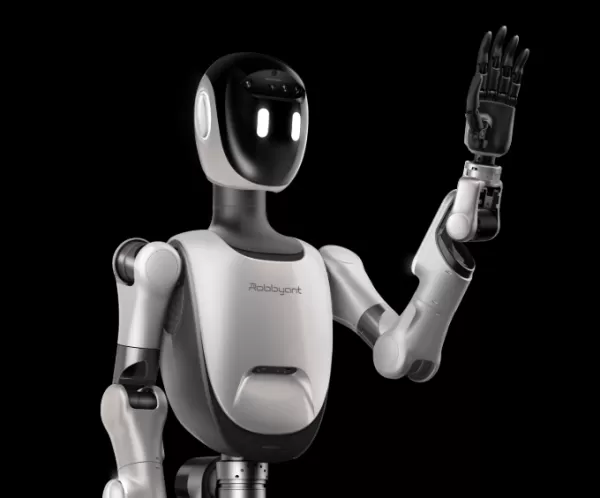 R1: Chinese Tech Giant Unveils Optimus-Rivaling Humanoid Robot
Ant Group Unveils First Humanoid Robot Prototype
The payments giant's robotics division has debuted its R1 humanoid at major tech events, showcasing automated cooking demonstrations and signaling ambitions beyond simple manufacturing applications.
P
R1: Chinese Tech Giant Unveils Optimus-Rivaling Humanoid Robot
Ant Group Unveils First Humanoid Robot Prototype
The payments giant's robotics division has debuted its R1 humanoid at major tech events, showcasing automated cooking demonstrations and signaling ambitions beyond simple manufacturing applications.
P
 August 23, 2025 at 9:01:18 AM EDT
August 23, 2025 at 9:01:18 AM EDT
AI simplifying things? Ha, sounds like a sci-fi dream! This article nails how deployment gets messy fast. Too many skills needed, not enough coffee. 😅 Anyone else struggling with this?


 0
0
 July 23, 2025 at 12:59:47 AM EDT
July 23, 2025 at 12:59:47 AM EDT
L'article est super intéressant, mais franchement, intégrer l'IA semble être un casse-tête sans fin ! 😅 Pourquoi tout compliquer alors qu'on veut juste simplifier les choses ?


 0
0
 May 12, 2025 at 9:42:08 PM EDT
May 12, 2025 at 9:42:08 PM EDT
Evitar complexidade no AI é essencial! Este guia esclarece muito bem o paradoxo entre simplicidade e complexidade. Foi surpreendente perceber o quanto é difícil tornar as coisas simples. Ótimas dicas para lembrar ao implementar AI. 🔧🌟


 0
0
 May 12, 2025 at 5:32:24 PM EDT
May 12, 2025 at 5:32:24 PM EDT
AI 복잡성을 피하는 방법을 알게 되어서 좋았어요! 단순함과 복잡함의 역설이 잘 설명되어 있습니다. 하지만 구체적인 예시가 있으면 더 이해하기 쉬웠을 것 같아요. 여전히 유용한 정보였습니다. 🤔💡


 0
0
 May 11, 2025 at 7:11:53 PM EDT
May 11, 2025 at 7:11:53 PM EDT
Evitar la complejidad en IA es fundamental! Esta guía explica muy bien el paralelismo entre simplicidad y complejidad. Es increíble ver cuánto esfuerzo se necesita para hacer las cosas sencillas. Excelentes consejos para tener en cuenta al implementar IA. 📝🧠


 0
0
 May 11, 2025 at 3:53:41 PM EDT
May 11, 2025 at 3:53:41 PM EDT
AIの複雑さを避ける方法が学べてよかった!シンプルと複雑さのジレンマがよくわかるガイドです。実装する際のアドバイスはとても参考になりますね。もっと具体的な例があればさらに良くなったかも🤔


 0
0


